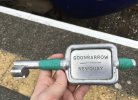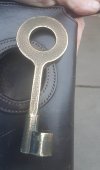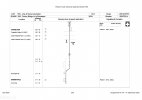bramling
Veteran Member
Just the box. There was a token hut identical to all the others on the branch built on the Up platform (which until the junction was moved s few years ago was used in both directions by HOWL services), but to the best of my knowledge it never had a token machine installed - and as I posted above the hut itself was destroyed only a few weeks ago.
Okay thanks, missed the earlier post. That makes sense as I vaguely remember seeing the hut on the platform, but wondered why it was never used, especially as it would avoid a stop at the signal box.
The entire Tarka Line is no-signalman remote token working.
Not quite, as there’s no token for the Crowley Bridge to Crediton section.
The token sections are Crediton to Eggesford and Eggesford to Barnstaple. This came up a little while ago, however ISTR the general consensus was there’s no token instrument at Barnstaple. Not sure if there was at one stage, however this presumably means that if anything is stabled in the sidings at Barnstaple the token has to be taken by road back to Eggesford.
I think Newquay is token worked, presumably the sections being St Blazey to Goonbarrow and Goonbarrow to Newquay. St Ives ISTR is a train staff.
(This is an excellent thread, and would make a good “sticky” if someone could collage it all together).
Last edited:



